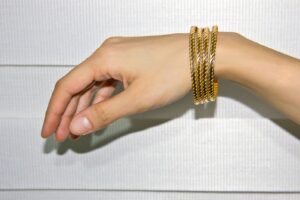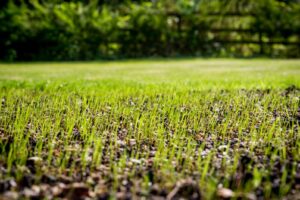
Like in the case of a crown which portrays one’s personality, style and general health, good hair treatment is important for healthy and beautiful hair. You should make sure that you select the treatment that suits your own hair types.
Therefore, The first key step towards enjoying super-fabulous and gorgeous locks is knowing your own particular type of hair–whether it is curly, fine, coarse, oily or moist. This guide seeks to delve deeper into issues related to determining your hair type and give plenty of tips for choosing effective remedies to make your hair feel awesome.
Identifying Your Hair Type
You have to know what treatment is best suited for your hair by classifying hair types. Different hair types can largely fit into the following broad categories:
- Straight Hair
- The strands in straight hair are smooth flowing without any curls and waves.
- It often has a texture. May appear flat.
- Wavy Hair
- The most common type of waves are wavy hair which lies on a spectrum between straight and curl hairs.
- The wavy lines run along the whole length of it.
- Curly Hair
- The hair that forms spirals or coils is termed curly.
- Such forms of hair can have different curl patterns starting off with waves and finishing up with springy coils.
- Coarse Hair
- The roughness of coarse hair stands out.
- It may be straight, wavy or curly. Tends to resist styling efforts.
- Fine Hair
- Such strands are usually thin, and they lack sufficient bulkness in order to form a good body of hair.
- Regardless of whether straight, wavy or curly, it tends to appear flat.
- Oily Hair
- Oily hair tends to get oily fast.
- Thus requiring regular washings to achieve cleanliness.
- Dry Hair
- Dry hair lacks moisture resulting in a frizzy appearance that is prone, to breakage.
- It may feel rough when touched.
For excellent results in hair treatment, don’t hesitate to consult with professional experts who specialize in hair care. Their expertise can make a significant difference in achieving the fabulous hair results you desire, whether you’re dealing with damaged hair, hair loss, or just want to improve overall hair health and appearance.
Choosing the Right Hair Treatment
Each hair type presents its challenges and requirements when it comes to treatments. Here’s a detailed breakdown of options for hair types:
- Straight Hair
Recommended Treatments: Straight hair benefits from lightweight products like volumizing shampoos and conditioners. These products add volume while preventing flatness, in the hair’s appearance.
Avoid: Avoid using cream treatments as it will weigh down hair and make it look greasy.
- Wavy Hair
Recommended Treatments: Wavy hair often needs moisture and gentle curl enhancement. Look for shampoos that provide hydration and lightweight products that enhance your waves without weighing them down.
Avoid: Stay from greasy products as they can make your hair look oily or stiff.
- Curly hair
Recommended Treatments: Curly hair thrives with hydrating, anti frizz products, like leave in conditioners, curl defining gels and creams. These products help maintain the shape of your curls and control frizz.
Avoid: Avoid using products that contain sulfates as they can strip away oils leading to dryness and frizz.
- Coarse Hair
Recommended Treatments: Coarse hair benefits from rich nourishing treatments such as deep conditioning masks and hair oils. These products provide needed moisture and softness to hair.
Avoid: Stay from chemical based products as they can worsen dryness and cause damage.
- Fine hair
Recommended treatments: Fine hair benefits, from volumizing shampoos, lightweight conditioners and root lifting sprays. These products add body to your hair without weighing it down or making it appear greasy.
Avoid: Avoid oil based products as they tend to make fine hair look flat and oily.
- Oily Hair
Recommended Treatments: To manage hair it is best to use clarifying shampoos that effectively remove oil without stripping the scalp too much. Opt for oil gentle conditioners to prevent buildup of oil and maintain a balanced scalp.
Avoid: Avoid using moisturizing products as they can exacerbate the oiliness and give your hair a greasy appearance.
- Dry Hair
Recommended Treatments: Dry hair requires moisture so it’s advisable to choose shampoos, deep conditioning masks and hair oils. These treatments help hydrate your hair and restore its vitality.
Avoid: Stay from products that contain alcohol or sulfates as they can contribute to dryness, frizz and breakage.
General Tips, for All Hair Types
While each hair type has needs there are some tips that apply universally:
Regular Trims: Schedule regular haircuts every 6-8 weeks to prevent split ends and encourage healthy growth.
Scalp Care: Maintain a scalp by considering tailored scalp treatments that suit your needs.
Heat Protection: Prioritize protecting your hair from heat damage by applying heat products before styling with tools.
Experimentation: It’s important to try products and treatments in order to find what works best for your hair.Hair Care is not a one size fits all approach. Its important to customize your routine to achieve results.
Conclusion
You have a canvas made of hairs that require the proper treatment to come up with the best work, it all starts with identifying a treatment that is best-suited for your hair. Understanding how to deal with your hair’s challenges using products that cater to its needs based on its types.
Keep it beautiful and lively. You should also remember that you can always get a professional advise of a hairstylist if there are any questions with certain hair treatment in regard to your particular type of a hair. As a customer, they are highly knowledgeable about certain items and regimes that would leave your hair naturally bright. With the knowledge and care you can confidently embark on a journey, towards ensuring that your hair looks and feels amazing every day.







